Abstract
By growth experiments in indoleacetic acid-1-14C (IAA), and determination of the 14CO2 evolved, it has been shown directly that polyphenols synergize IAA-induced growth by counteracting IAA decarboxylation. Sinapic and ferulic acids act like polyphenols. Endogenous polyphenols doubtless exert the same influence in intact plants. Monophenols stimulate the decarboxylation of IAA under conditions where they depress growth. When Mn++ is present as well, this effect is enhanced. All these growth effects are paralleled by effects on the isolated IAA oxidizing enzyme of Avena.
EDTA acts like the polyphenols in depressing the decarboxylation of IAA, and not synergizing with the growth induced by naphthalene-acetic acid (NAA) and 2,4-D. However, since EDTA synergizes with IAA for growth even at optimal IAA concentrations, its growth promotion probably involves an additional effect.
DIECA inhibits powerfully the destruction of IAA, but without causing much growth promotion, apparently because its decomposition products inhibit respiration.
Mn++ aloné stimulates the decarboxylation of IAA, i.e. this ion promotes the IAA oxidase in vivo as it does in vitro. Nevertheless, it does not inhibit elongation, but at relatively high concentrations even stimulates it, both at low and high IAA levels. Since Mn++ also promotes the growth induced by NAA and 2,4-D, its growth action cannot rest primarily on modifying the metabolism of the auxins.
Cobalt somewhat decreases the decarboxylation of IAA, but this cannot explain its growth promotion, since Co++, like Mn++, stimulates elongation even at optimal IAA concentrations, and acts with NAA just as well as with IAA. Ferrous ion, on the other hand, acts like the polyphenols.
Floating pea stem sections exude enough organic matter to support bacteria which after 7 hours cause considerable decarboxylation of IAA. Avena coleoptile sections have a comparable though smaller effect after 12 hours.
The present experiments, with those of others, point to a major role for polyphenolase in controlling hormone balance, since the introduction into a phenolic molecule of a second, adjacent hydroxyl group changes the action from auxin-destroying to auxin-preserving. Thus the phenol oxidizing enzymes must act as general growth controllers.
Full text
PDF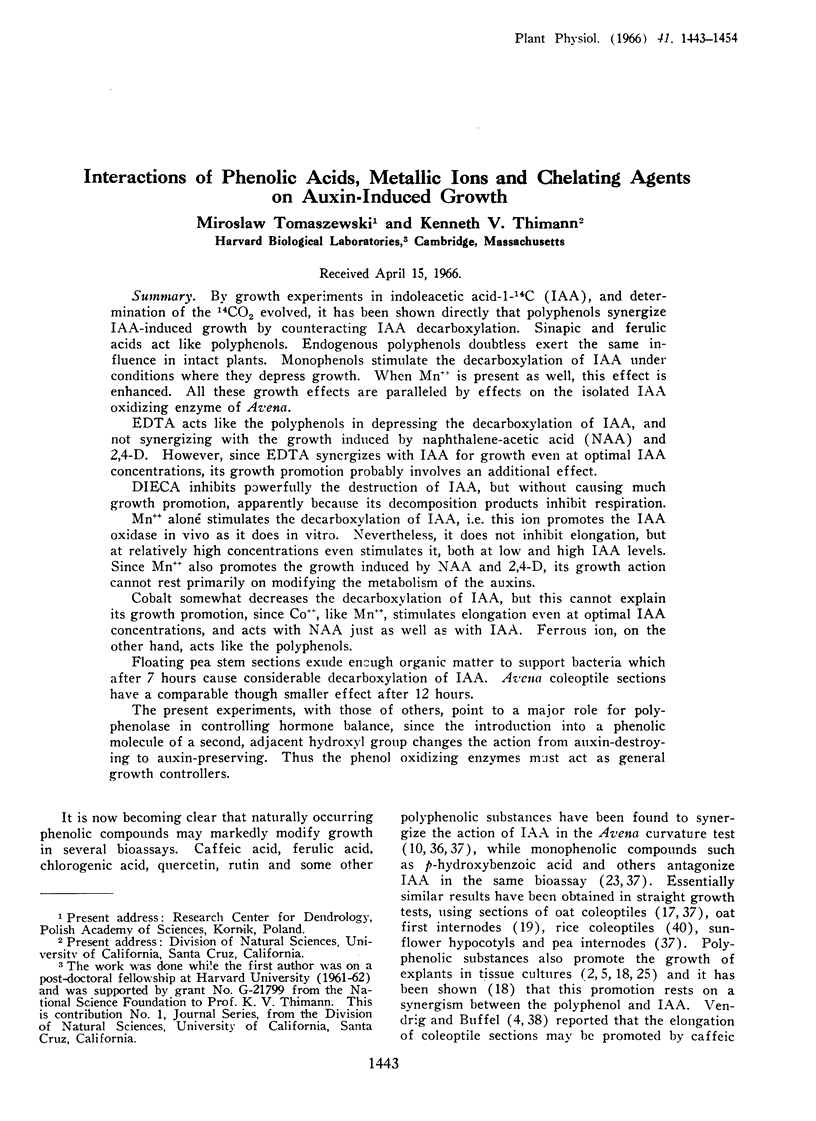



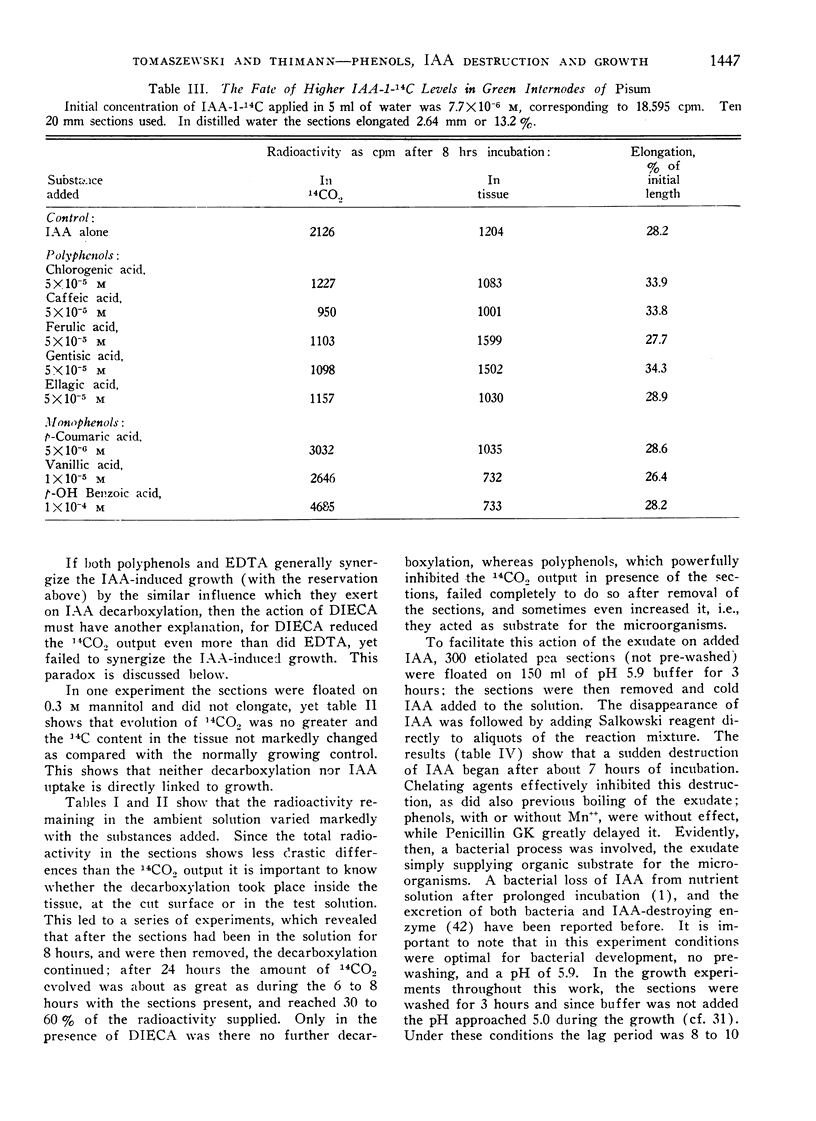
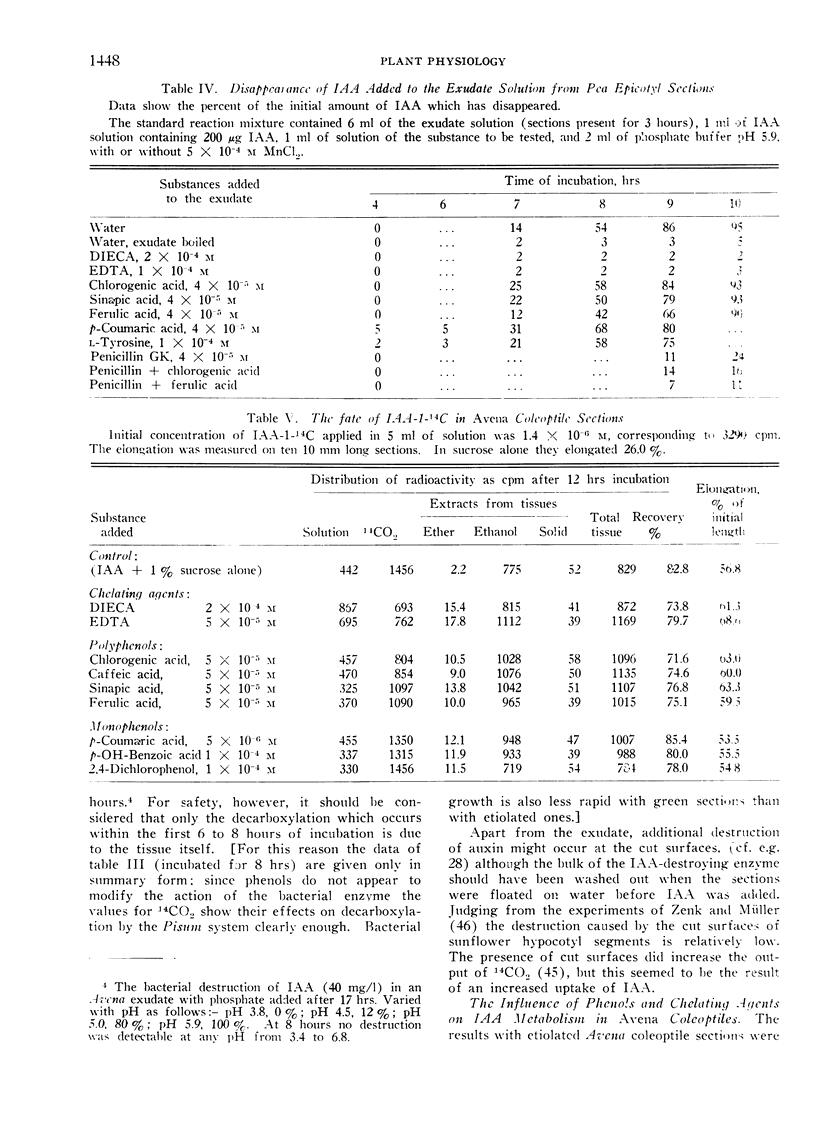
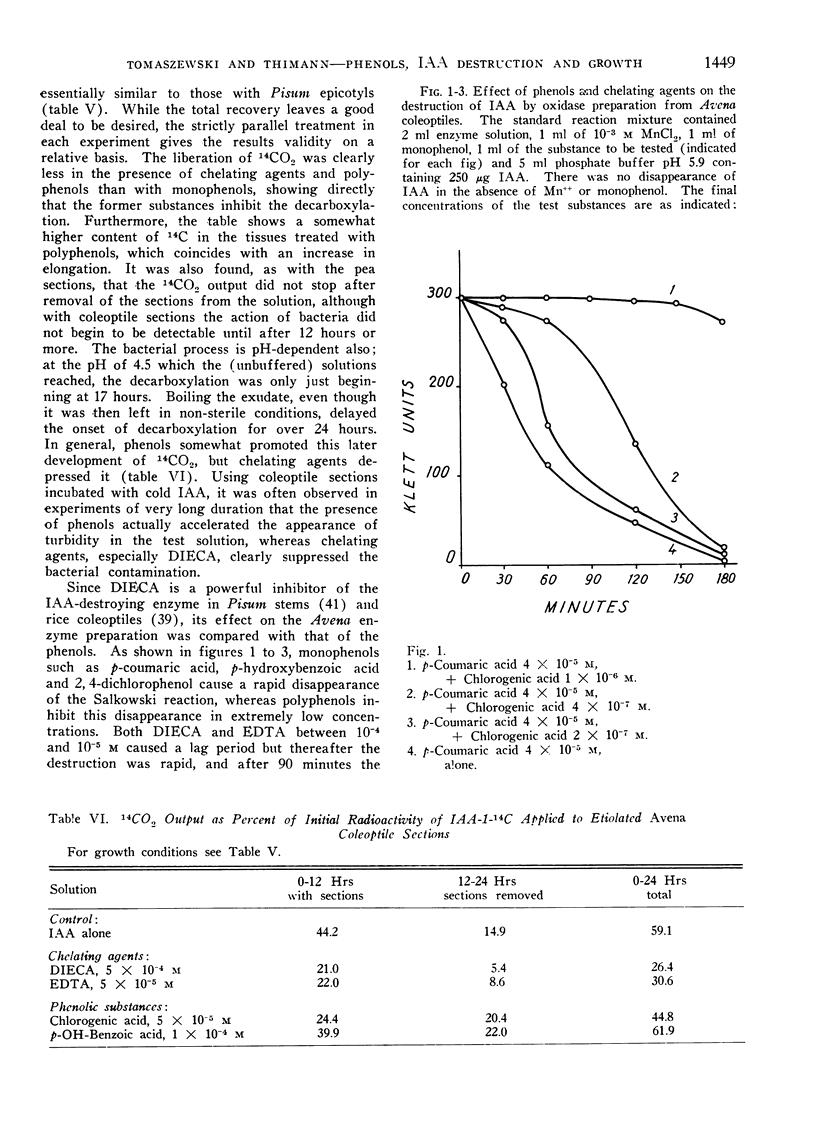
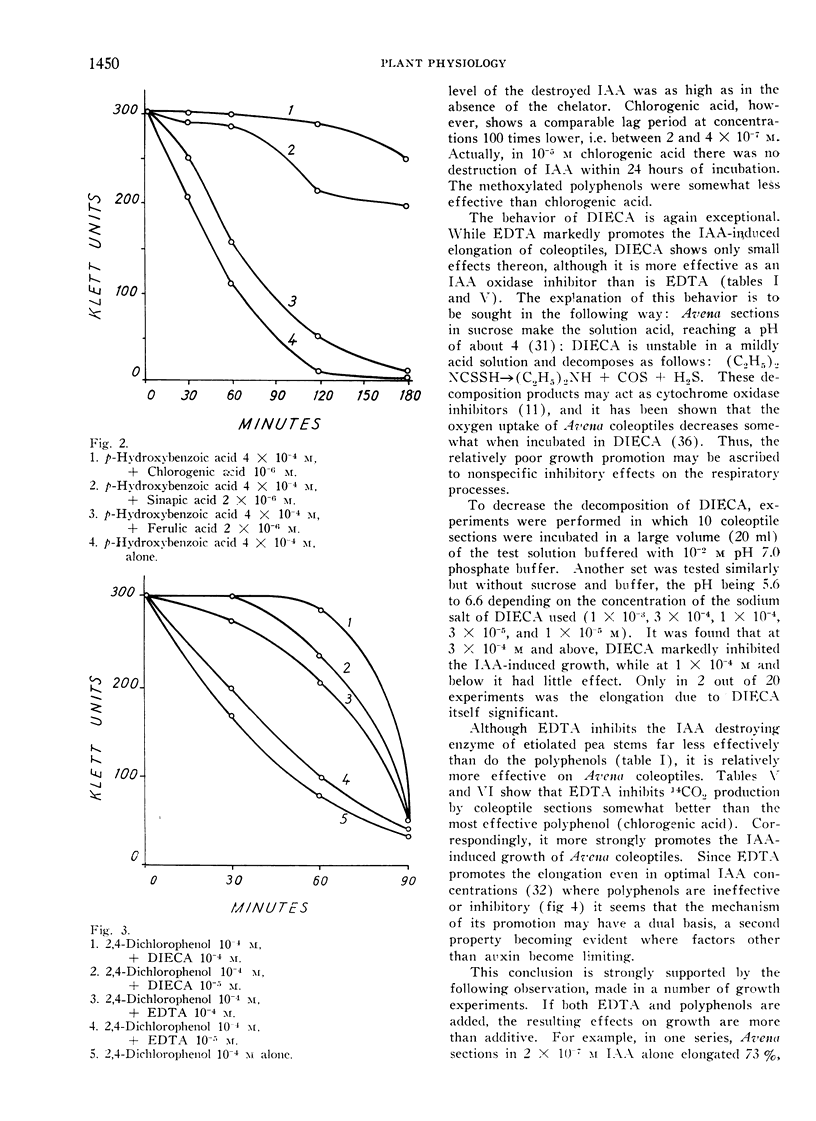
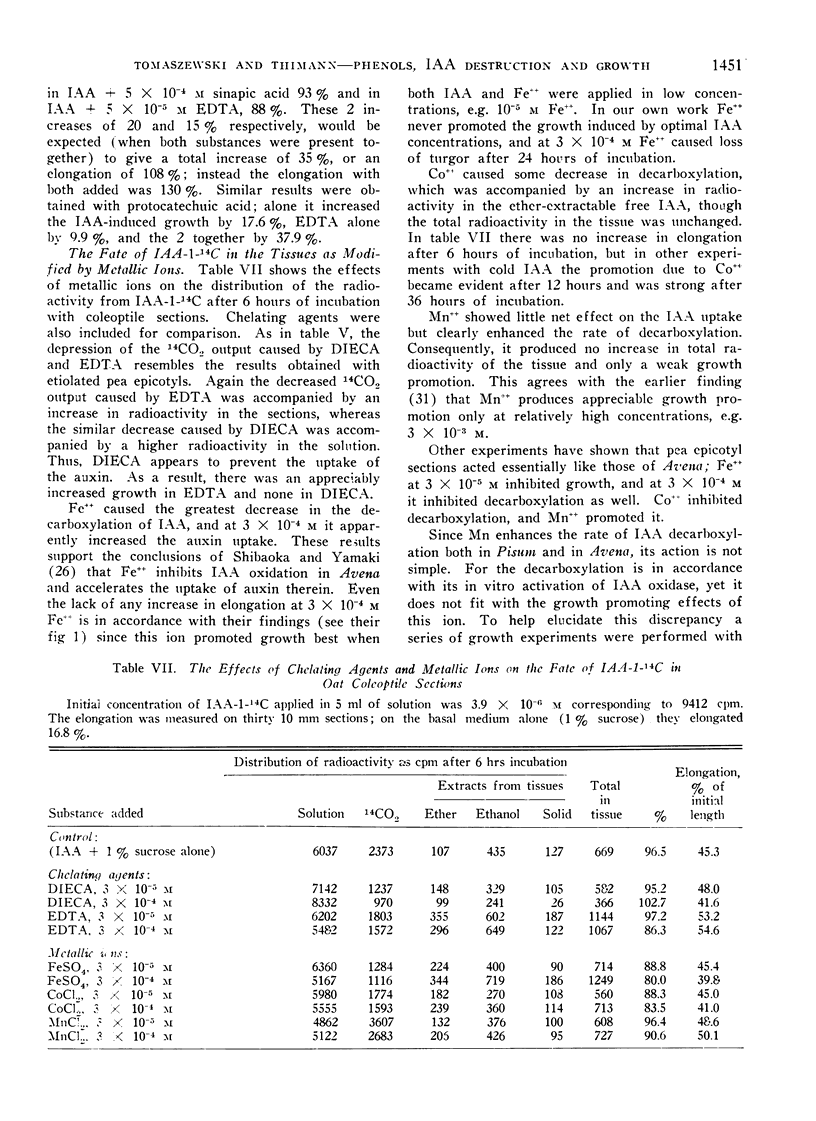

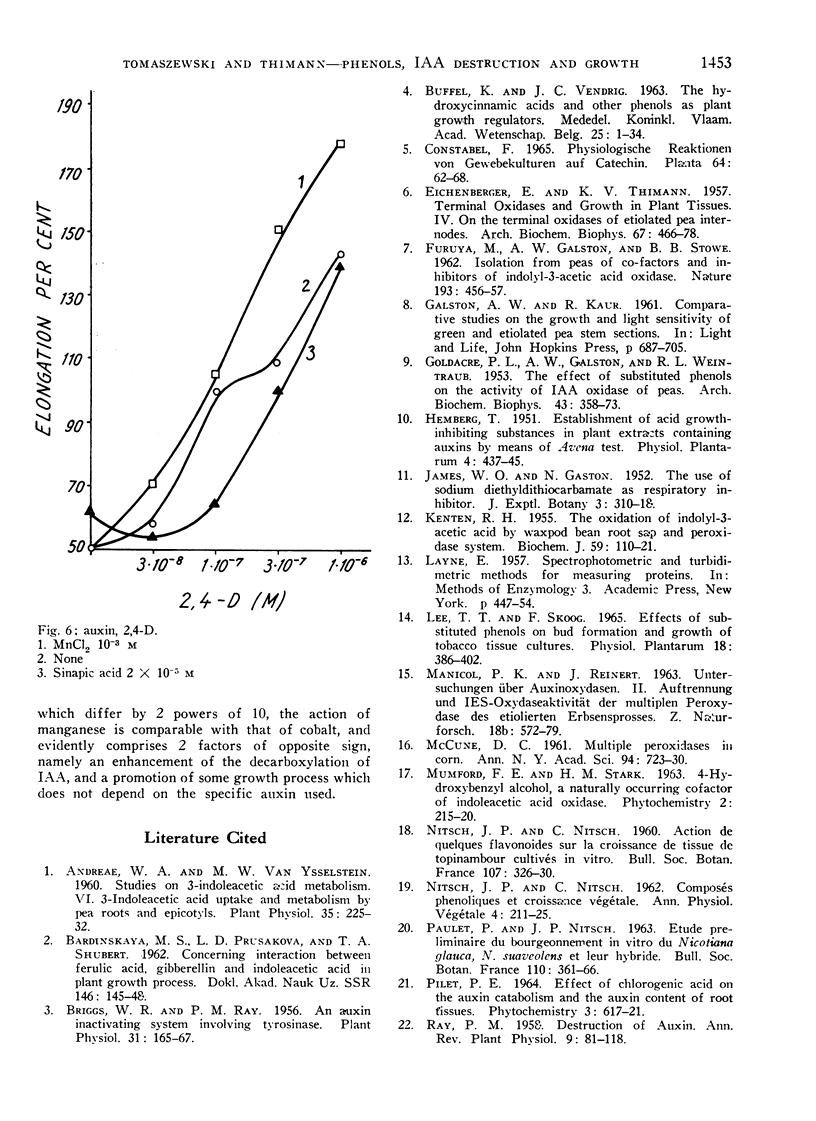

Selected References
These references are in PubMed. This may not be the complete list of references from this article.
- Briggs W. R., Ray P. M. An Auxin Inactivation System Involving Tyrosinase. Plant Physiol. 1956 Mar;31(2):165–167. doi: 10.1104/pp.31.2.165. [DOI] [PMC free article] [PubMed] [Google Scholar]
- EICHENBERGER E., THIMANN K. V. Terminal oxidases and growth in plant tissues. IV. On the terminal oxidases of etiolated pea internodes. Arch Biochem Biophys. 1957 Apr;67(2):466–478. doi: 10.1016/0003-9861(57)90301-6. [DOI] [PubMed] [Google Scholar]
- FURUYA M., GALSTON A. W., STOWE B. B. Isolation from peas of co-factors and inhibitors of indolyl-3-acetic acid oxidase. Nature. 1962 Feb 3;193:456–457. doi: 10.1038/193456a0. [DOI] [PubMed] [Google Scholar]
- GOLDACRE P. L., GALSTON A. W., WEINTRAUB R. L. The effect of substituted phenols on the activity of the indoleacetic acid oxidase of peas. Arch Biochem Biophys. 1953 Apr;43(2):358–373. doi: 10.1016/0003-9861(53)90130-1. [DOI] [PubMed] [Google Scholar]
- KENTEN R. H. The oxidation of indolyl-3-acetic acid by waxpod bean root sap and peroxidase systems. Biochem J. 1955 Jan;59(1):110–121. doi: 10.1042/bj0590110. [DOI] [PMC free article] [PubMed] [Google Scholar]
- THIMANN K. V., TOMASZEWSKI M., PORTER W. L. Growth-promoting activity of caffeic acid. Nature. 1962 Mar 24;193:1203–1203. doi: 10.1038/1931203a0. [DOI] [PubMed] [Google Scholar]


